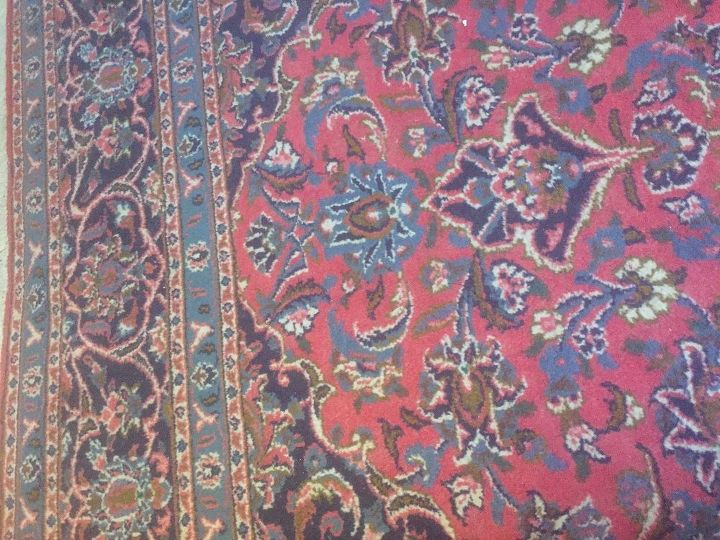How do I decorate my new house?

After a house fire late last year, I will - some months in the future - be in the fortunate position of having a blank canvas to decorate...yes, the whole house! I am someone who finds decisions excruciatingly difficult so where do I start? I don't want to waste this opportunity and end up with something that is just 'ok' or - even worse - doesn't 'do it' for me. Does anyone have any hints to help?
Related Discussions
Blackout curtains behind vertical blinds
I have two 6' patio doors, and I want to add blackout curtains to keep the sun/cold out. What is the best way to hang them, and what can I use to push the curtains ba... See more
How to make a balloon garland?
Does anyone know how to make a balloon garland or a balloon arch?
How do I decorate my half wall in my entryway?
My front door entrance has a half wall with wood top leading to my basement the other wall is full. The area is about 5 by 7 which leads to the livingroom. Thanks fo... See more
How do I mold a new ear for my outdoor deer statue?
My deer statue has a missing ear. I love this deer and I do not want to throw it away. I am truly hoping someone would have some suggestions for me at how to go about... See more
How do I change the colors in my new Persian rug to look antique?
I have a new Persian rug that has very vibrant colours. I love to change it in order to look old, aged, antique and faded.any ideas.....of a technique ?thank you in a... See more
How do I put a hanging hook into the brick wall outside of my house?
I would like to hang a sign or a planter, and I think I need to use an anchor, however I would like to see a step-by-step to ensure I do this correctly. Thanks Kat



Start with the living room furniture in a solid color that you can accessorize. Use the accessories to find the wall colors and go from there. Good luck!
Cut out things you like from magazines. Look at decorating books and Pinterest. I agree with Heje...stay with solid colors and accessorize with prints. That way, you can easily and cheaply change it up later. Do your wall colors in the same color family, to harmonize your house. It always looks bad with say, one room blue, another yellow, etc. Once you look at enough books and magazines, it will become clear to you what you gravitate towards.
Hi, Trish,
Sorry about your fire! What a daunting project. I'd start with livingroom and bedrooms, and kitchen, because those are highly needed rooms.
Look through design books to best determine your style preference, realizing the furniture scale must work with your room sizes.
Laurel Bern, Smith and Van Zandt (both have websites) are designers with varying design methods, so go to a large bookstore and browse magazines and books before purchasing.
Crownpointe Cabinetry, Poggenpohl, Merrilat, Shrock of Walnut Creek, Woodmode, Siematic, etc. are kitchen cabinet makers which will showcase various kitchen settings, styles, woods, inserts to appeal to a wide variety of tastes.
If you're working with flooring already in place, decide how it will work (or not) with other items. Were your windows affected? Are they wood? Painted or stained?
What did you have previously that you liked? What did you hate? What did you live with but want changed? Double, convection wall ovens; granite, quartz, slate, concrete countertops; a 5-6 burner gas/electric cooktop; lazy susans, pull out and soft close shelving/drawers/doors, hood vent, double (multiple) sinks, island with water and electric, seating at island or table seating? Keep walkspace in mind when making selections. Are you taller and would prefer taller countertops? Will you need more Ground fault Arc Interrupters installed?
Do you have color preferences in fabrics and wood types? Wood styles (Shaker, Mission, Art Deco, Contemporary, etc).
Do you have children or pets? Your life style will have bearing on your choices.
Do you want furniture that will last 30 years, or do you think you'll change styles more often?
If you can change flooring and windows, think about insulative values. Fiberglass windows are virtually maintenance free. Wood windows are highly desired, but very expensive and do require some maintenance. If you never want to dust or wash blinds, get them between double pane glass. Get skylights installed if it's possible, as they save a great deal of electric, but consider placement, and whether you want them to have blinds.
Don't forget that to save costs, you can always check antique stores, because furniture more than 20 years old is much better made than most of what's readily available. Know that better furniture makers will customize anything you want.
Please write again if you need more ideas.
This project has to be more than slightly overwhelming, as I spent a year researching ideas for a custom kitchen, and several years on furniture choices...
While you are waiting, do a vision board for each room in the house. Study basic principles of design. Learn how to use a color wheel. Learn the basics of scale, you don't want to have a table with itsy bitsy trinkets, you need pieces that fit the size, form and function. Don't go anywhere without a tape measure and color swatches. Get a friend to help you, whose style and flair you admire. I have the ability to say yay or nay within 30 seconds of laying my eyes on a piece. Not everyone has that, but it can be learned. Keep your receipts for everything so you can take it back if it doesnt work. Work on one or two rooms at a time so you don't get overwhelmed. Consider your lifestyle, climate, children, pets when making decisions. You want easy to clean, wash and care for and not be a slave to constant cleaning. Or just hire an interior designer to assist you for maybe the living room, dining room or den / family room and have them teach you so you are less petrified to make a decision. You have outstanding suggestions here. Print them out and refer to them as needed. You can do this! 🌞
OMG!!! I also had a house fire and had the opportunity to start from scratch with a blank canvas!!! This is a once in a lifetime opportunity, if your situation is like mine, the property and all it's contents were a total loss and covered by insurance, so when all is said and done EVERYTHING will be brand new! First of all, are you involved in the architectural redesign of your home? What style home are you building (tudor? ranch? Spanish? etc.)? I believe the architecture of the house should dictate the theme, or style of the furnishings in the home. For example, you wouldn't put Tuscany style furnishings in a mid-century modern house! Next, are you involved in the intricate placements of interior details? For example, are you getting to choose exactly where each electrical socket will be and where light fixtures are placed, how much shelving goes into closets, which switches control which fixtures, how much space is between tub and toilet, etc? This is where you really need to put thought into how you use your home! Third, permanent installations - flooring, cabinetry, wall and ceiling texture, trims, countertops, sinks, faucets, etc... I went for as low maintenance as possible on all of my choices. My goal was to have as "easy to clean" of a house as possible. Then finally, for removeable furnishings and décor - what I did was I went out and "studied" hotel rooms and lobbies. My thought was this - Hotel rooms (good ones anyway) are always beautifully designed, but they are also designed so that maids can get in and out as quickly as possible. Once I started "studying" these, I saw that the style of any décor can be communicated through essential room elements (curtains, wall papers or paint colors, wall art, furniture and bedding, etc.), so there is no need to make attempts to communicate style or décor through bits and pieces here and there that really only become room clutter and one more thing to dust over time. Accessories (flower vases, throw blankets, accent pillows, etc.) should be REAL statement pieces - meaning invest in one or two beautiful objects per focus area (vignette), instead of having lots of little things (room dandruff). When I rebuilt my house, for example, I even specified the minimum space that would be between the tub and toilet, and toilet and vanity. Why? Because I have to fit a mop in there, and I don't want to have to fight to do it!!! In the time where we were removed from our home and construction was underway, I took a piece of poster board for each room that would be in the new home, painted it the color I had chosen for the walls in that room, and as I found pieces for the room (a comforter set for a bedroom, for example), I would remove the photo from the packaging after I'd purchased it and tape it to the painted poster board. If it was an object I bought without packaging I'd snap a photo of it, print the photo, and tape that too. I then carried these poster boards in the trunk of my car so that as I was out and about if I found a décor piece I thought might work I could either go to my car and get my poster board to bring into the store and hold the object up against, or I could ask the sales clerk if I could take the object out to my car for a few minutes to compare it to my "vision" board there. Having the vision board also allowed me to not have to have the items I bought out in accessible places in our rental. Instead, once photo'd, I was able to box them up safely and put them in storage, so that when it came time to move in to the newly rebuilt house, all things were nice and new still, having been packed away carefully. Good luck!!!
That's what decorators or interior designers do! Don't feel bad it's not your thing, and my experience has told me it's worth the money to invest a little in this. When I haven't, I have been unhappy with the overall feel of the home and this is important.